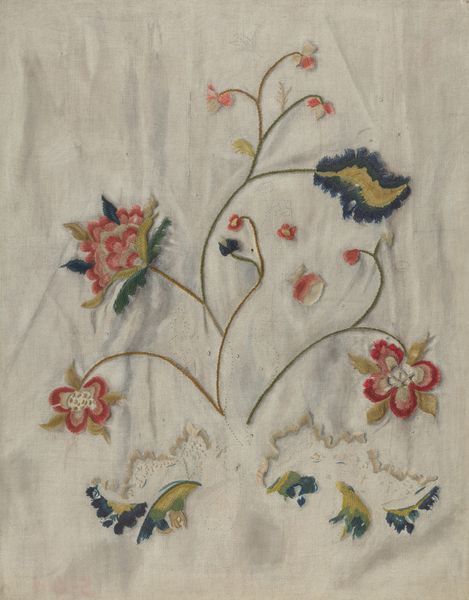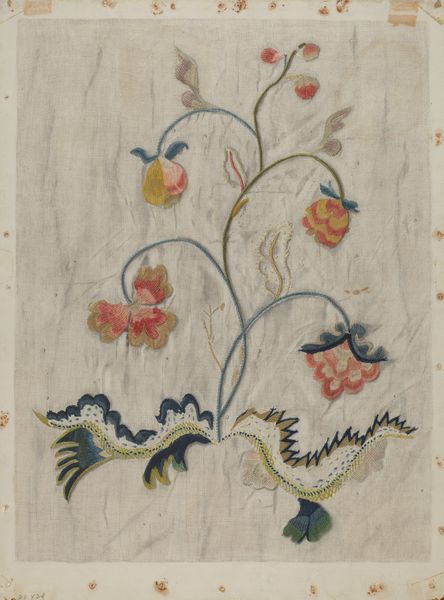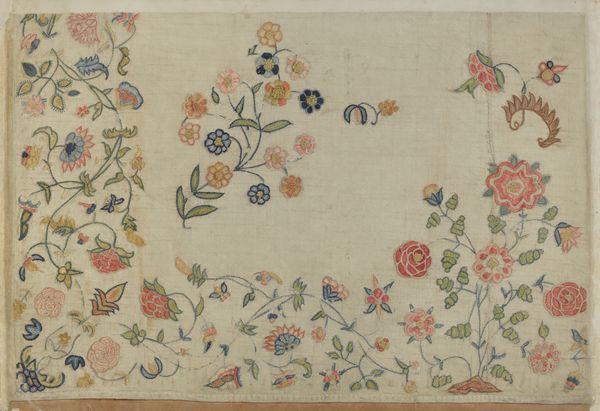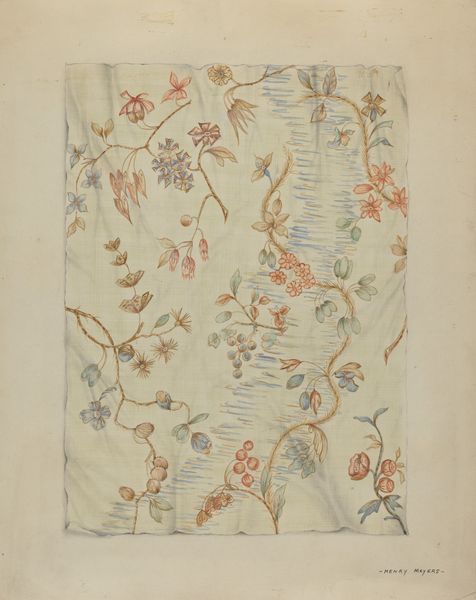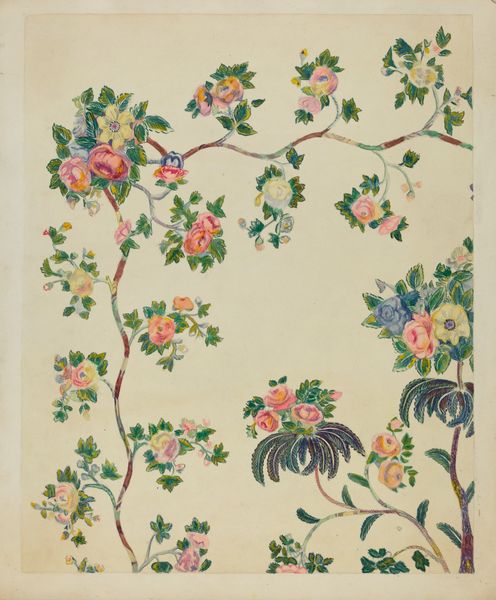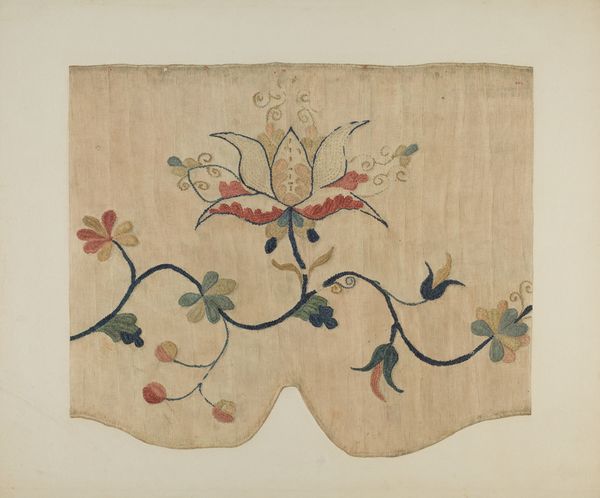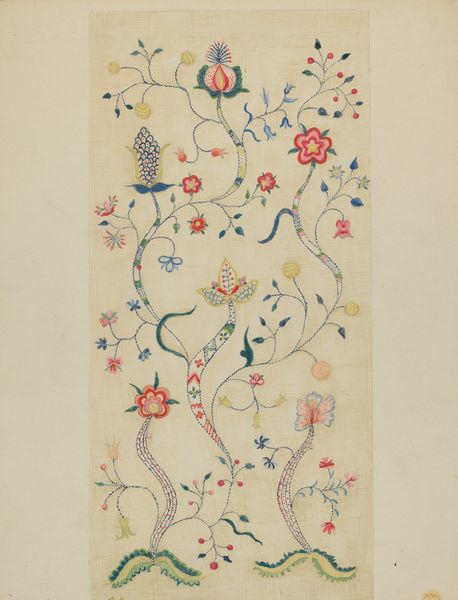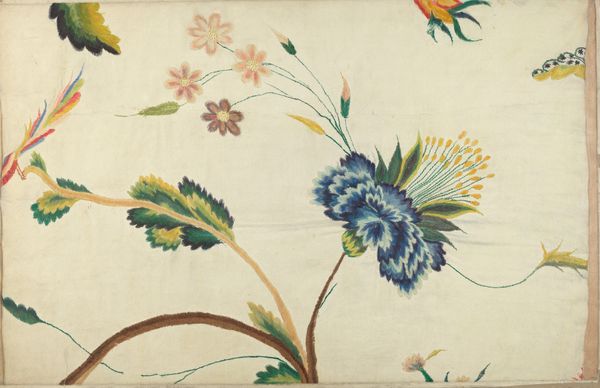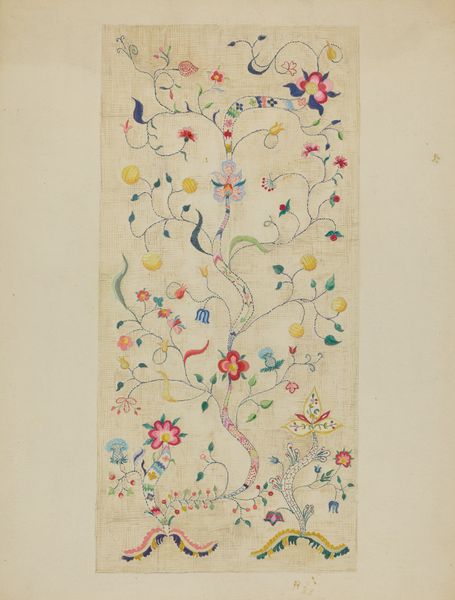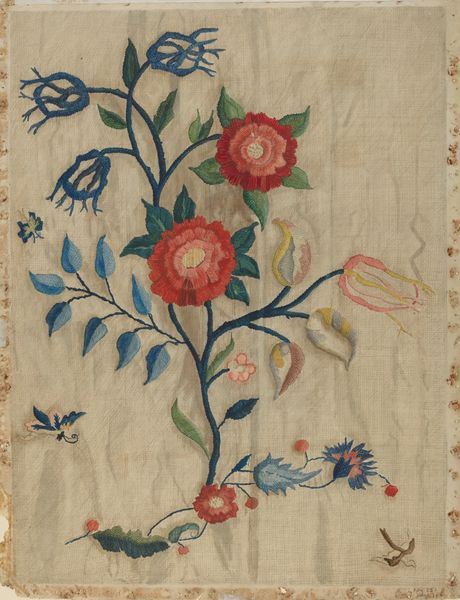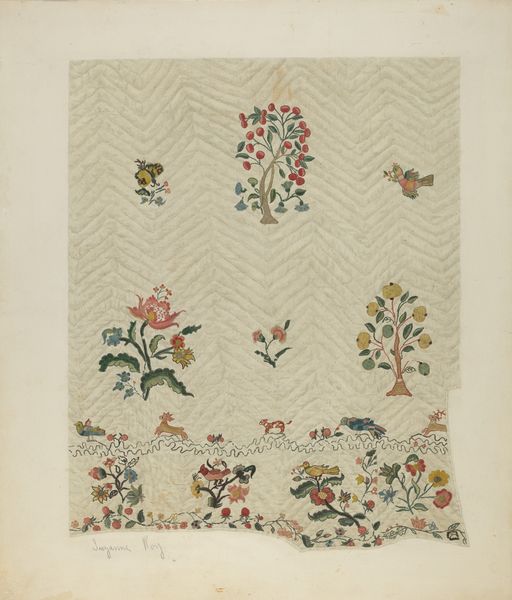
drawing, fibre-art, textile
#
drawing
#
fibre-art
#
organic
#
water colours
#
textile
#
decorative-art
Dimensions: overall: 36.4 x 38.3 cm (14 5/16 x 15 1/16 in.)
Copyright: National Gallery of Art: CC0 1.0
Editor: This is "Coverlet," a textile piece created around 1938 by Mildred E. Bent. I am really drawn to the detail in the stitching; the flora look like they're growing right out of the cloth. As someone interested in the role of craft in the social fabric, how do you interpret a work like this? Curator: Considering its historical context, this coverlet speaks volumes about the shifting roles of women and domestic labor in the 1930s. These crafts, frequently done by women, served both practical and artistic purposes, becoming increasingly symbolic due to industrial advancements. How might a piece like this have been viewed during that time, reflecting broader socio-economic changes? Editor: It’s interesting you bring that up. It’s both practical and decorative, blurring the line between utility and artistry. Perhaps this suggests women carving out artistic expression within traditional roles. Curator: Precisely! These "domestic arts" have often been overlooked as "minor" forms of artistic expression. Looking at Mildred Bent, whose social circles would have valued fine art differently, don't you think it can be seen as a subversive act in and of itself? The composition may borrow from academic still-life painting, but it uses thread and fabric, disrupting established hierarchies. Editor: I see what you mean. The very act of creating this could be a form of quiet resistance or self-expression. Curator: It raises important questions. What does this choice of material convey about the maker’s world? It prompts us to question whose stories are valued in the grand narrative of art history, and how we might broaden our understanding to include previously marginalized voices and forms of expression. Editor: That definitely changes how I view the Coverlet. I’ll think twice before overlooking a 'simple' craft! Curator: And I am prompted to look closer to recognize that "minor" pieces often tell greater tales of socio-economic shifts.
Comments
No comments
Be the first to comment and join the conversation on the ultimate creative platform.
